General Insurance Blogs, Articles & Updates by - Magma HDI
Have us call you
- RENEW YOUR POLICY
- BUY NEW POLICY
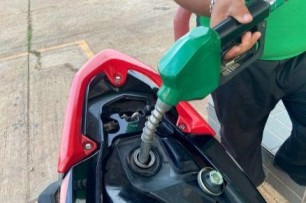
Here are the top three parts that can make your bike more fuel-efficient
With fuel prices skyrocketing now more than ever, it has become a rule of thumb to ensure that the vehicles you purchase or use, are fuel-efficient. Consumption of a limited amount of fuel can be an escape from burning a hole in your pocket. Plus, fuel-efficient vehicles help to reduce pollution and smog. So, making your vehicle fuel efficient can cause significant changes in your lifestyle, and you can contribute your part towards the biggest concerns of climate change.
Are you looking for suggestions for reducing your carbon footprint through less fuel consumption? Or do you wish to make your vehicle more fuel-efficient so you don’t burn through your savings?
This blog will discuss how you can achieve a more fuel-efficient vehicle using various techniques. Here are the top three parts that can make your bike more fuel-efficient. Let’s get started.
1. Give a rest to those breaks:
Your bike will consume less fuel and give you a better mileage if you unnecessarily avoid using brakes. Also, by preventing rash and aggressive driving, you save substantial fuel. Accelerating out of bounds and then hastily using the brakes will cause your vehicle to consume more fuel and power, thus diminishing the whole purpose of making your vehicle more fuel-efficient.
Always ensure you drive within the specified speed limit and abide by the traffic rules. This will not only help your bike stay in good condition but also prevent any accidents.
2. Be careful about the frequent gear change:
Along with the brakes, you must also ensure that you avoid changing the gears frequently and hastily. Driving at a constant speed will not only help you be safe on the road but will also consume less fuel, thus raising the fuel efficiency of your bike.
If you continuously operate your bike in the highest gears even when you don’t need it, it will lead to unnecessary fuel usage. Instead, always ensure that the operating gears are suitable for the road conditions you are driving in.
3. Take care of the tyres:
You must take care of the tyres to ensure that your two-wheeler consumes less fuel and maintains a good grip on the road. To take care of it, check if they are not underinflated. In the case of underinflated tyres, drag is created, increasing the friction, thus requiring more power and fuel to move the bike forward.
This unwanted drag can make it difficult for you to drive your vehicle. Properly inflated tyres reduce the drag, thus requiring a low power supply from the engine. This results in lesser fuel consumption.
Now, you need to keep an eye on the pressure and the amount of air-filled in the tyres. They must be inflated according to the default prescribed levels set by the bike manufacturer. Anything more or less than the mentioned limits can cause damage to the tyres and, in turn, the bikes.
Some other ways to make your bike more fuel-efficient include:
● proper maintenance of the bike and all its parts, using authentic and manufacturer-recommended spare parts in case of any damage
● driving safely and calmly
● purchasing the best fuel for your motorcycle
● check the air filters, and in case of any clogging, clean them
● regularly cleaning up your engine
We hope this blog provided valuable insights on making your bike fuel-efficient. Saving on fuel and spending extra during damages is not a wise thing to do. The best solution can be to purchase bike insurance to protect your bike against any damages, some of which might be sudden. Therefore, you must explore different options and buy the best bike insurance online to cater to your needs.
Click HERE to know more about purchasing bike insurance online.
Disclaimer: The information provided above is for illustrative purposes only. To get more details, please refer to policy wordings and prospectus before purchasing a policy.

Benefits of wearing orthopaedic shoes and quick tips for choosing the right ones
Just like any other part of your body, you must take care of your feet. Any ignorance can land you into severe issues such as extreme pain and discomfort while walking, hip problems, back problems, posture issues, hammertoe (pain issues in the joint of the middle toe), etc. The other common problem among women is metatarsalgia, a condition when the ball of your foot starts having pain and gets inflamed. This happens due to the constant use of high and tight heels.
Did you know there is a magical solution for all your feet problems? Orthopaedic shoes are one of the best options out there in terms of footwear. Orthopaedic shoes are made according to the doctor's advice and are accurate against foot problems. Foot troubles and conditions take quite a long time to heal; some might become critical if not taken care of initially. And orthotics are the best treatment that lasts longer and helps to heal. They act as a catalyst in your daily movement without any side effects.
Are you someone looking for more information on orthopaedic shoes? This blog will discuss the benefits of wearing orthopaedic shoes and quick tips for choosing the right ones. So, let's get started!
1. Boosts circulation:
Orthopaedic shoes are designed to improve circulation in the foot area instead of restricting the blood flow. The shoes help you adjust your feet, provide comfort, allow flexible movement, and improve the restricted blood flow. These shoes also provide immense relief from the pain in the nerves.
2. Improved support:
Suppose your shoes create discomfort while wearing or moving around. In that case, there is a considerable risk of severe foot problems like flat feet, metatarsalgia, and plantar fasciitis (pain in the heels due to flattening up of tissues that link the heel to the toes), etc.
These problems, if ignored, can go on to intensely affect your mobility and cause unbearable pain and discomfort. To avoid such grave health issues, wearing orthopaedic shoes provides an arch of support, proper padding, and cushioning for your heels.
3. Pain relaxers:
People who walk around ten thousand steps daily feel numbness and pain after a tiring day. Wearing orthopaedic shoes can help them ease into their routine and carry out their daily tasks effectively. It also prevents any redness and skin issues in the feet.
4. Say goodbye to the foot problems:
Orthopaedic shoes are your go-to solution against all kinds of foot problems like foot alignment, pain in the foot's arch, arch-related damages, etc. These problems can, over time, be corrected by the constant use of the right orthopaedic shoes. These shoes provide the best comfort, support, and cushioning to help your feet regain shape, alignment, and health.
While choosing the right orthopaedic shoes for your feet, do consult your doctors for the prioritising factors and dimensions required. Make sure to walk around in the shoes to analyse how the dynamics feel and be careful about the size. Buying the right size is very important. From formal to casual and stylish, there are multiple options of orthopaedic shoes.
That's a wrap on the benefits of wearing orthopaedic shoes and quick tips for choosing the right ones. As we talk about orthopaedic shoes and how they help keep your legs and feet in good health, it is wise to discuss health insurance for yourself and your parents. Specific problems come with age, and you must purchase the best health insurance in India for parents to ensure that they suffer no financial trouble as they grow older.
Click HERE to know more about purchasing the best health insurance in India for parents.
Disclaimer: The information provided above is for illustrative purposes only. To get more details, please refer to policy wordings and prospectus before purchasing a policy.

Follow these simple steps to detox your kidneys at home naturally
Kidneys are vital organs of our body. These two small, bean-shaped organs are located on each side of your spine and help remove toxins from the blood, balance mineral levels, and regulate blood pressure. The only way to keep your kidneys healthy is by staying hydrated and eating a balanced and healthy diet.
Your kidneys can detoxify independently, but sometimes they may not function optimally. Less-functioning of kidneys causes symptoms like fatigue, bloating, and trouble sleeping. Making changes to your lifestyle and creating a diet strictly based on kidney-friendly foods can assist the body's natural detoxification process. If you're experiencing a retain of water, a little more tiredness than usual, or elevated blood pressure, it might be time to give your kidneys and the rest of your body a little extra attention.
The following are the simple steps to detox your kidneys at home naturally.
1. Increasing water intake:
Drinking less water can cause dehydration, a build-up of wastes and acids in our body that clogs the kidneys. The only way to remove these toxic wastes from your body is to drink lots of water. The amount you need to drink depends on your age, body weight, climate, and physical activity. Medical researchers recommend drinking about 4 litres of water for men and 3 litres for women.
2. Including healthy foods in your diet:
It is one of the first steps to get your kidneys back healthy and in optimal shape. A healthy balanced diet is essential for the proper functioning of kidneys.
Consider including the following foods in your diet:
• Lemon juice – Lemon juice is acidic, increases the citrus level in your urine, and suppresses the growth of kidney stones. It also filters blood and other toxins. Include daily intake of diluted lemon juice to reduce the formation of kidney stones.
• Apple cider vinegar – Apple cider vinegar helps prevent oxidative stress of the kidneys. The citric acid in apple cider dissolves kidney stones. It also helps lower blood pressure, balance blood sugar, and increase levels of antioxidants, which creates optimum conditions for kidney health.
• Watermelons and pomegranates – Watermelon hydrates and cleanses the kidney. It is also rich in the organic compound lycopene, which improves cardiovascular health and ensures the well-functioning of kidneys. The juice of pomegranate contains potassium salts which are also effective in removing kidney stones. In addition, the astringent properties of a pomegranate prevent stone formation and flush out toxins.
3. Boost immunity by drinking kidney-friendly juices and teas:
You can supplement your fluid intake with dandelion, alfalfa, or green juices. They are effective in reducing the chances of kidney stone formation. Beet juices contain betaine, which increases urine acidity and prevents calcium oxalate crystals (a common constituent of kidney stones). Other effective cleansing agents include coconut water, cranberry juices, and cherries.
4. Avoid kidney-threatening foods and habits:
Avoid bad habits, including smoking, drinking, and excessive coffee intake. Limiting processed foods, added sugars, artificial sweeteners, etc., will help maintain the kidneys' overall health.
Taking good care of the kidneys is crucial to feeling fresh and active. Before trying out a detox process, consult a doctor or dietician to ensure that you'll be consuming enough electrolytes and calories to support your everyday metabolism. In addition, conduct regular checkups and screenings to ensure the health of your kidneys.
We would also recommend you insure yourself with a health insurance plan to safeguard your health against any possible health issues. There are a plethora of policies available online, each with its distinct perks. Browse through online health insurance companies, compare their plans, and choose the best to stay fit.
Click HERE to browse through the best health insurance plans.
Disclaimer: The information provided above is for illustrative purposes only. To get more details, please refer to policy wordings and prospectus before purchasing a policy.
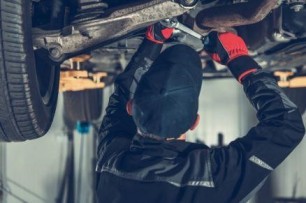
Best tips to check and maintain your car's suspension
The comfort and the ease of driving your new car are something that you always remember. However, with time, you start noticing small changes and don't feel the same comfort anymore. There could be many reasons for that. Wear and tear in the car seats, engine load, worn-out tyres, etc.
A car’s poor suspension could also be the reason for the growing discomfort. A fully functional suspension system ensures a smooth driving experience and keeps the vehicle under control. Over time the suspension system in the car experiences wear and tear and can take away from you a wholesome driving experience.
A suspension system comprises components such as wheels, tyres, springs, steering, etc. Different driving conditions govern these parts' longevity and wear off over time. To ensure that your car is working in proper condition, it is crucial to recognise any faults in the system and address them immediately to ensure safety while driving.
In this article, we discuss a few ways to check and maintain your car’s suspension.
1. Check air pressure:
Properly inflated tyres ensure that the chassis is protected from any damage. If they are not fully inflated, they can affect the vehicle's handling and performance. This can also be extremely dangerous when driving. To ensure that your tyre pressure is optimum, check it after driving every two thousand kilometres.
2. Wheel alignment:
Wheel alignment is another vital activity that ensures proper and risk-free driving conditions. The more challenging roads you take, the more likely your tyres are misaligned. Wheel alignment should be checked every two years or less, depending upon the kind of tracks you drive on. If you face difficulty while handling the steering or manoeuvring your vehicle, this indicates misaligned wheels.
3. Check power steering fluid:
If you enjoy the comfort of power steering or the hydraulic steering system, then maintaining and changing the fluids is part of your car’s regular maintenance. Check the level at least once a couple of months and replace it every three years. It is best to talk to a mechanic or refer to an owner’s guide to understand your car’s needs better.
4. Inspect shock absorbers:
If your car shudders or bounces abnormally when you drive, then these are indications of flawed shock absorbers. Make a visit to your nearest service centre to have the inspection of the shock absorbers. Ensure to get the shock absorbers checked after the first ten thousand kilometres and then annually. More challenging tracks and changing climates can cause wear and tear faster in the shock absorbers and might need to be changed sooner than mentioned above.
5. Accidents:
Slight irregularities can also affect the working of the chassis. If you have met an accident, hit a huge bump, or ran across a pothole, the chances are that some nuts and bolts could have disoriented from their original position. An inspection by a mechanic will help you rest assured and will not give you any trouble in the middle of the highway.
These are some ways to ensure that your car’s suspension works correctly. To avoid extra expenses or a complete breakdown, it is best to undergo regular servicing and check-ups for your vehicle. These services are a way of ensuring that every part of your vehicle is functioning effortlessly and efficiently.
Ignoring problems can lead to several damaged parts, which can be extremely dangerous when driving. Buy private car insurance India to ensure maximum safety and an amazing driving experience for your car. The right insurance boosts the longevity of your vehicle and undertakes expenses that might cost you a huge amount.
Click HERE to know more about private car insurance India.
Disclaimer: The information provided above is for illustrative purposes only. To get more details, please refer to policy wordings and prospectus before purchasing a policy.
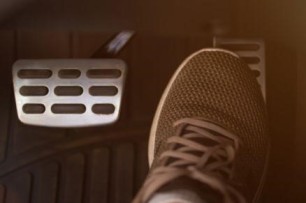
Five reasons your car undergoes acceleration problem
Car acceleration issues, apart from being bothersome, can also be dangerous. There are several reasons why your car might have a problem while accelerating. Technically, when you push the gas pedal, several components and sensors work seamlessly to move the vehicle forward and achieve that speed. Even a minor failure in this whole system can hamper your car's acceleration.
The car's internal combustion engine needs to breathe to accelerate quickly and develop the desired thrust and power. It compresses a specific amount of air and fuel ignited in the combustion chamber. The exhaust gases from the process are released through the tailpipe. If there is any disruption in the process, a loss in power will occur.
Engine performance has been controlled by the Engine Control Module (ECM) since the 1980s. The ECM uses the data from several different sensors to administer the combustion process. Issues in air and fuel delivery sensory problems are the leading cause of acceleration malfunctions.
Let's discuss the reasons your car may undergo acceleration issues in detail.
1. Check the air filter:
If you're facing trouble accelerating your car, you might need to check the air filter. The function of the air filter is to trap dirt and other impurities and prevent them from entering the combustion chamber. A clogged air filter prohibits the air from entering the combustion chamber, further affecting the process.
2. Keep the fuel system clean:
A clogged or dirty fuel system also disrupts power generation, thus affecting the vehicle's acceleration. The fuel does not reach the combustion chamber and therefore starves the engine and causes low power.
3. Fix the ignition:
Ignition issues can be one of the leading causes of acceleration problems. These systems are designed to ignite the air/fuel mixture by creating a powerful spark. However, poor-quality ignition wires or dirty power plugs can cause trouble in the complete burning of fuel in the combustion chamber. This results in the loss of power necessary for achieving quick acceleration.
4. No way out for the exhaust gases:
Exhaust gases from the collapsed catalytic converter get trapped at times which hinders the breathing capability of your engine. This inhibition builds up excessive back pressure and causes a significant loss of engine power.
5. Have a functional O2 sensor:
The oxygen (O2) sensor measures post-combustion oxygen levels in the exhaust chamber. A slow-reacting, damaged, or dirty O2 sensor is responsible for the quality of the air/fuel mixture, which impacts the engine, thus affecting the acceleration.
Some other reasons due to which your car undergoes acceleration problems are:
• A slipping clutch disk that doesn't wholly engage with the transmission to the engine.
• A dirty or defective mass airflow sensor (MAF) affects the engine's airflow, causing a strain in acceleration.
• The throttle plate position and movement are measured by the Throttle Position Switch (TPS). A problematic TPS data affects the air/fuel mixture engine speed and ultimately strains the acceleration process.
Now that we have discussed several reasons for an acceleration problem, it would be a wise choice to purchase car insurance to protect your vehicle and you against unanticipated troubles. Mishaps come uninvited, so you need to be prepared during the good to be safe during the worst.
Address the above problems related to acceleration and fix them at the earliest to ensure safe travel. If your car demands extensive repairing, don't refrain from visiting a mechanic. Instead, guarantee your repairing expenses with car insurance benefits and make your vehicle functional again.
Click HERE to know more about car insurance.
Disclaimer: The information provided above is for illustrative purposes only. To get more details, please refer to policy wordings and prospectus before purchasing a policy.

Five reasons why eating in your car is a bad idea
Distracted driving is one of the most common reasons for fatal car accidents. However, calling and texting are not the only forms of distractions for driving. When it comes to the most distracting factors while driving, many individuals overlook eating. If there's one thing we can all agree on, it's that we've all had to eat our meals on the go, or at least the majority of us have.
When behind the wheel, drivers must keep their attention on the road and adhere to all safety rules to be safe. People who eat while driving are multitasking and diverting their focus away from the road, putting multiple lives at risk.
Learn more about the unpleasant reality of eating in your car.
1. Reaction set back:
Your response time will be slower and delayed if your eyes and focus aren't on the road. Accidents might occur as a result of delayed reactions. Your brain and senses need to respond swiftly to sudden changes on the road. Therefore, you cannot afford to preoccupy your attention with other activities like sipping coffee or having a burger while driving.
2. Bug alert:
You're creating a biohazard food trap by treating your car as a makeshift dining room. Engineers compress a lot of components into a tight area, a plethora of even narrower spaces that only French fries and breadcrumbs seem to fit. It has the potential to become a gold mine for insects and other small creatures.
3. Health faux pas:
While eating in the car can be handy, it rarely equates to healthy eating. The common fast-food alternatives at drive-through restaurants are easy to devour mindlessly. However, mindless eating is incompatible with regular, more natural eating habits, so you're more likely to ignore your health and instead grab something else at your next stop.
4. Creates distraction:
When you eat while driving, you aren't paying attention to what's happening around you. You might be concerned about staining your clothes or spilling your drink. If your eyes are off the road, you may miss changes in traffic patterns or fail to see a car in your blind zone.
5. Hands off the wheel:
You'll have to take your hands off the wheel at some point if you're eating while driving. Whether opening a packaged sandwich or a lunch box, people who eat while driving will let go of the wheel, generating a disturbance.
Being the person behind the wheel, you cannot take even a slight risk of taking your hands off the wheel. You don't just steer the vehicle, but even the safety of you and your co-passengers.
Negligent driving is a rising issue nationwide, and it needs to be addressed with immediate actions by spreading awareness and implementing the rules strictly. It will also be challenging to claim unintentional damage if proven at fault while driving.
So, say no to eating in the car and maintain good car hygiene. Good upkeeping of the car interiors, regular dry cleaning, and car insurance are considered healthy car habits. So, follow the above tips and check for the best car insurance in India to be financially safe and secure your possession. If you want to live a better lifestyle, it's time to give up eating in your car.
To look for the best car insurance in India, click HERE!
Disclaimer: The information provided above is for illustrative purposes only. To get more details, please refer to policy wordings and prospectus before purchasing a policy.
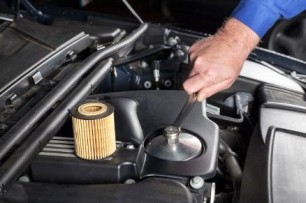
Complete guide on when to change car filters
The most commonly overlooked part of car servicing is changing the filters regularly. This task is a big mystery for many as to when is the right time to change a car filter and how to do it.
Timely change and maintenance of your car filters help optimise the motor parts' functionality and allow them to function efficiently. However, you need not be a mechanical whiz to notice the signs of when to change your car filters. This blog aims to help you understand the signs or hints your car gives indicating an immediate filter change.
1. Cabin filter:
A cabin filter is used to clean the inside of your car. This is done using air conditioning or heating vents. Clean air inside the vehicle is imperative for personal health and for preventing allergies and other respiratory problems. Unclean or damaged filters can block the airflow and cause visibility issues when defogging the windows.
Cabin filters must be changed every fifty thousand kilometres. Still, it is best to talk to an expert mechanic or consult the manual for recommended vehicle maintenance. If the air from the vents blows with less force or contains an unpleasant odour, your filters likely need to be changed.
2. Fuel filter:
The fuel filter helps keep dust, rust, and other impurities at bay. By removing the contaminants, this filter ensures the efficiency and performance of the engine. A clogged fuel filter can experience difficulty in the free flow of fuel, so the engine pumps harder than it needs to. It can lead to poor acceleration or a troubled start every time.
It is suggested that the fuel filters must be changed after fifty thousand kilometres. But these criteria often keep changing according to your vehicle's build and brand. If you start noticing decreased power, stalling, difficulty accelerating while going uphill, shuddering movements, and difficulty starting the engine, these are signs of a clogged fuel filter.
3. Air filter:
An air filter in the car is used to prevent insects, sand, debris, and other minute particles from entering the engine. Air filters ensure a good mixture of air and fuel to enhance the engine's performance. The cleaner the air in the engine, the more power the engine has. Good air filters also ensure better combustion, thus reducing fuel consumption. A clogged air filter leads to incomplete combustion and releases impure black smoke from the exhaust.
Air filters can be changed every twenty thousand kilometres. The interval can vary depending on the tracks you choose daily. You should reduce this interval if you drive on dirty or dusty tracks. Decreased mileage, strange noises, less power, black smoke, or strong fuel smell are symptoms of clogged air filters. You should rectify these issues immediately upon notice.
4. Oil filter:
The oil filter ensures continuous oil flow and removes dirt, impure oils, and metal particles in motor oil without hindering lubrication. All moving parts, such as the rods, shaft, etc., are protected from damage if the oil filter functions well. Change the oil filters between ten thousand kilometres to fifteen thousand kilometres.
Poor performance, metallic noises, and low oil pressure are some signs indicating a damaged oil filter.
We have discussed everything you need to know about the various car filters and their purpose. Proper maintenance and servicing are essential to keep your car in good condition. To ensure the financial coverage for your vehicle's care, always look for insurance options provided by the best car insurance company in India.
Click HERE to know more about the best car insurance company in India.
Disclaimer: The information provided above is for illustrative purposes only. To get more details, please refer to policy wordings and prospectus before purchasing a policy.
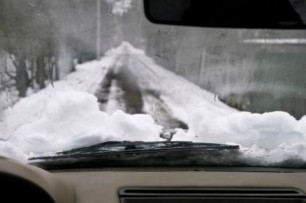
Driving through the snow? Here's what you need to know
Choosing to go for a drive while it's snowing outside may sound like an unusual option. So, ask yourself, "Have you prepared your car ahead of time?" A winter-ready vehicle should have enough tyre tread and air pressure, a vast tank of petrol, and a clean windshield.
Give yourself extra time to arrive at your location to avoid collisions. Do not take your hands off the wheel. Also, remember to get insurance from your choice of a motor insurance company and add a layer of protection to your car.
Keep in mind the following to lead a safer journey while driving through the snow.
1. Pay attention to the lights flashing:
If you turn and notice a flashing orange light, this is the stability-control system warning you that the vehicle is about to slip off the road. Ease off the accelerator until no more power is applied; this helps the automobile recover grip. Also, while making tight bends in town on icy or slushy roadways, do not accelerate rapidly. Always increase the throttle with steady momentum, so nothing unexpected occurs.
2. Install winter tyres:
This isn't a piece of driving advice; it's a survival suggestion. Winter tyres provide significantly greater grip in snow, sleet, and ice than even the most extraordinary all-season tyres. Installing a set of four winter tyres is the most intelligent thing you can do to boost your safety.
3. Handle the skids:
Skids, even large ones, are manageable, and you may quickly regain control of the vehicle. Firstly, don't panic—and don't slam the brakes. Instead, reduce your speed to avoid a front-wheel skid, which occurs when the front tyres lose traction, and the vehicle rotates in a broader arc than expected. In the event of a rear-wheel skid, swiftly move the steering in the same direction as the rear tyres are sliding. Keep your foot off the pedals. Steer back in the original direction when the rear wheels get a grip.
4. Drive extremely smooth:
The key component of driving safely in the snow is to be smooth with steering, acceleration, and braking. Why? Rapid control motions quickly unstick tyres with a fragile grip on the slick road. So every rotation of the wheel, a press of the brake, and movement of the accelerator must be careful, calm, and progressive.
5. Carry the necessary supplies:
Pack a snow shovel in your vehicle before you go, along with a bag of salt and a tow rope. The tow hook is located beneath the rear cargo floor, next to the spare tyre. Due to heavy snowfall, roads get severely affected, and tyres tend to get jammed, making the car halt.
Remember that your best chance for driving this winter is to ensure that your tyres sustain winter conditions. Snow can hamper the health of your car and make your journey troublesome. Stay adaptable, as it's best to pull over someplace to wait out the weather. Also, prioritise purchasing the ideal insurance plan from the best motor insurance company by considering your requirements and the benefits you can get from it.
Click HERE to head to the best motor insurance company.
Disclaimer: The information provided above is for illustrative purposes only. To get more details, please refer to policy wordings and prospectus before purchasing a policy.

Here is a list of five things that elders must take care of before planning a road trip
The passion for exploring does not fade with age. Many seniors start planning their post-retirement plans from an early stage. And, travel is one of the most exciting adventures they wish to do in their old age. After years of providing for their families, they deserve a break to live for themselves. The elderlies should experience the world’s magnificence at their own pace and spend some time enjoying the serenity of nature to rejuvenate their soul.
However, elderly adults should take particular measures before travelling. If you intend to travel with more aged folks or hook them up with a senior road trip group, here are some factors to consider for their security and wellbeing.
1. Health restrictions and physical evaluation:
You can never take too much precaution when it comes to health. It is critical to keep medications available, therefore, ensure they are conveniently accessible. Carry all prescribed medications with you. It is also a brilliant idea to supply over-the-counter medications on hand for various potential requirements.
2. Keep the trips short:
While creating an itinerary, plan the travelling and sightseeing accordingly. Avoid ending up bone-tired journeys. Instead, take frequent breaks while driving so they don’t feel tired. Choose destinations that don’t involve much walking and are ideal for aged people to explore. It is advisable to take frequent halts for the seniors to stretch their bodies and feel refreshed and energetic again.
3. Road conditions:
It is prudent to be aware of road conditions. Damaged roads can be a problem for people who are not used to travelling regularly. Also, keep in mind that older people’s bodies are vulnerable due to low bone density and cannot handle jerks like youngsters. Therefore, maintain a steady speed and avoid rushing.
4. Do not forget to pack the necessities:
You must bring a few basics with you: Warm clothes and any medical equipment such as asthma inhalers, wheelchairs, shawls, and so on. A cushion or blanket will also come in handy. Eating locally accessible food may not be the smartest choice in certain situations. As a result, bringing some of their favourite foods is preferable. But ensure that the food must be less spicy, less oily, easily chewable, and easy to digest.
5. Bring fewer belongings:
When going on a road trip, you want to concentrate on the journey, the magnificence of nature, and the locations you see. Taking valuables will add to your anxiety and reduce the pleasure of the vacation. It also presents unsafe conditions. And anyway, seniors who travel by car should be stress-free!
Follow the above tips carefully to ensure a comfortable trip for the elders. Checking on health and safety is paramount when travelling with aged people. To lean a little more towards the safer side, you must have insurance before planning the road trip. You are also required to invest in motor insurance as it is mandatory for anyone travelling via cars. So, before you start your trip, look for a motor insurance company in India and get your insurance covered. Remember to carry all the required documents with you throughout the journey.
To visit the best motor insurance company in India, click HERE .
Disclaimer: The information provided above is for illustrative purposes only. To get more details, please refer to policy wordings and prospectus before purchasing a policy.

Here is the special diet to keep you fit this monsoon
India is a country of diversity. Be its languages, cultures, traditions, customs, food, beverages, clothes, etc., the country provides you with a wide range of flavours linking back to the history and development of the region over time. The food palette in our country changes every hundred kilometres. And adding to the list are seasons. For every season, there are particular dos and don’ts regarding food.
The onset of the monsoon season creates a soothing vibe. The luring downpour, clouds, gentle winds, and food make the monsoon a season of endless cheerful moments. Cravings for fritters and tea are synonymous with monsoons. While oily and fried food gets our taste buds, it is also essential to be mindful about what you eat, especially during the monsoons.
This blog will discuss the dietary restrictions you must maintain to ensure you don’t fall sick. Here is the special diet to keep you fit this monsoon.
1. Oily food is a strict no:
While we all enjoy pakoras with tea in the lovely monsoon drizzles, it is not suitable for your heart and digestive system. Consuming too much oil can make it difficult for your digestive system to break down into energy-providing carbohydrates.
The excess fat can eventually be deposited in your body and, over time, cause pressure on your nerves which helps in circulating the blood. This makes it difficult for your heart to supply blood to the whole body. It can lead to severe health and heart risks.
2. Say no to spicy food:
Just like oily food, spicy food is not very gut-friendly either. It can cause indigestion due to excessive spice consumption and lead to problems like acidity, stomach ache, burns, diarrhoea, etc. Spicy food can severely impact your metabolism, slowing down the stomach’s ability to absorb all the nutrients from the food you eat.
3. Confused about leafy vegetables:
Doctors, nutritionists, and dieticians spend their entire lifetime advising their patients and clients to consume leafy greens. But you should avoid them during the monsoons. Why? The leaf moisture can cause it to go wrong, and the humidity makes germ infestation much more convenient and accessible.
If consumed in such a state, it can have severe health consequences. Apart from this, all the pesticides and insecticides might also cause some trouble due to the rain. So, to sum up, avoid eating leafy greens in the rainy season. If you still wish to consume them, ensure to wash and boil them thoroughly before cooking.
4. Be watchful about water:
If you or someone in your family consume water directly from the tap or the borewell, STOP. It would be best if you were careful about the water you drink. And stay even more watchful during the rainy season as the water might get contaminated and become unfit for consumption.
Drinking contaminated water poses high chances of diarrhoea, stomach aches, typhoid, cholera, stomach infections, and much more. Install a proper and home-friendly water treatment plant to ensure that the water you and your loved ones consume is safe to drink.
Other dietary tips include consuming tons of fluids and tea with special spices and herbs to help with sweating and the enormous humidity levels, which can cause dehydration and loss of nutrients. Consume spices like cardamom, ginger, turmeric, and cinnamon to help boost your immunity levels and combat any health issues (for example, cold and flu). Eating freshly cooked foods is another way to ensure that your diet contains all the nutrition you need during the monsoons.
Follow these tips and keep a check on your health without falling sick or suffering from any health conditions. Younger individuals tend to recover quickly due to a high metabolism rate compared to the elderly. So, it would be wise for you to purchase the best health insurance in India for parents after browsing through all the available options in the market. Find the one which caters to your needs in the best ways. Keep your parents’ health a priority.
Click HERE to know more about the best health insurance in India for parents.
Disclaimer: The information provided above is for illustrative purposes only. To get more details, please refer to policy wordings and prospectus before purchasing a policy.

Here are a few useful ways you can adjust your bike's idling by yourself
If you’re seeing this, you probably are wondering about a phrase that both seasoned motorcyclists and motorcycle marketers have mentioned several times: idling. What precisely is idling, and how can you adjust it by yourself? Let’s understand this.
What is idling?
Idling occurs when your motorbike engine is on and working, but you are not moving forward. Idling may also be defined as pausing at a stoplight with the motorcycle still functioning but not going forward. When your motorbike is idling, it is the period between igniting it and riding it.
Let’s dig deep into all you should know about idling.
How can we change the idle speed of an engine?
We try turning an alteration to raise or reduce the engine idle speed on turbocharged automobiles. Bikes manufactured now do not have such a feature. The idle speed of an engine is a pre-programmed function. We cannot directly modify the motor idle speed on the latest bikes. If the motor idle speed has to be adjusted, please refer to your bike’s manual to understand the recommended RPM first. The recommended idle speed of a bike depends on the type of engine and air to fuel ratio.
Does your bike need idling?
The most common purpose for idling a motorcycle is to “heat up” the engine. It helps in maintaining the engine properly circulated with gasoline, resulting in smooth riding. This is particularly frequent during the winter and in generally chilly areas all year. The idle period also varies according to the age of the motorbike. Older motorcycles idle for minutes, while current bikes idle for just a few seconds.
Yet another reason you should idle your motorbikes is that it is not always practical to switch the motor on and off when they are caught in traffic or need to get off their bike for a brief time.
How to adjust your bike’s idle?
It’s relatively simple if you do it right. If you have an older carbureted motorbike or an early fuel-injected motorcycle design, just use the idle speed adjusting screw. Twist and turn the screw slowly clockwise to raise RPM and anticlockwise to reduce RPM. This should be done when the engine has reached the average operating temperature. You may stop the idling once you feel that the engine has reached the desired RPM.
To summarise, idling on a motorbike occurs when the motor is left operating; however, the bike is not in motion. Idling is helpful to generate more RPM and attain more thrust. The motorists who desire constant power, usually get idling done or improved for a better experience.
Last but not least, being a motor-savvy person doesn't qualify you with all the protection for your bike. Instead, having a robust two wheeler insurance plan can help you overcome financial risks getting to your pockets. Numerous insurance companies offer two wheeler insurance online in India. Choose a suitable one and invest in it to ensure optimum financial security at the time of emergencies.
To browse two wheeler insurance online India, click HERE .
Disclaimer: The information provided above is for illustrative purposes only. To get more details, please refer to policy wordings and prospectus before purchasing a policy.

Visit these top stargazing sites in India to spend memorable nights
Who hasn’t desired to spend a night beneath the stars? The beautiful sky appears to be a canvas painted with countless twinkling stars. Stargazing gains a special place in the bucket list of most travellers. And rightly so. Who wouldn’t want to see the starry night while enjoying a mesmerising atmosphere? If you are travelling with a group, a random jam session under the open starlit sky will melt your heart. It’s a sight to behold.
Where can you find such places with stars lined up? Don’t worry. We can help you plan your next trip to the sites that offer you this jaw-dropping experience. Let’s get started.
1. Rann of Kutch, Gujarat:
Rann of Kutch in Gujarat is one of the largest salt marshlands on Earth. It offers the best crisp and clear night sky views. It encapsulates almost six magnitudes of stars, easily visible to the naked eye. All in all, this place is heaven in India for all the astrophile and stargazers. The time from October to February is considered the best to visit these marshlands.
2. Pangong Tso Lake, Ladakh:
Ladakh is a dream destination for the majority of travellers. And now, the iconic Pangong Tso Lake is an even more compelling reason that adds a feather to the hat. It is regarded as one of the best stargazing views in the entire country.
The lake is situated at an elevation of 4,225 meters. The starry sky outlines enhance the mesmerising night view from this lake. Trekking opportunities are available where you can set up camps and experience the view of the gazillion stars. Visiting Pangong Tso Lake in Ladakh from May to September would be the wisest choice.
3. Coorg, Karnataka:
Coorg is one of the most beautiful hill stations one must visit while touring the state of Karnataka. The waterfalls, coffee gardens and the lush green views can calm your soul and give you the peace you crave in the hustle of city life.
Giving you glimpses of mountain peaks and starry sky outlines, Coorg offers the tourists and adventurers multiple opportunities to camp in the forests where the tall trees form beautiful canopies, and the stars shine through. And if you are solely visiting Coorg for stargazing, make sure you plan your trip from October to March.
4. Spiti valley, Himachal Pradesh:
Himachal Pradesh offers some of the most beautiful views and tourist locations in India. And the high altitude makes it a perfect spot for experiencing the serene night sky views and capturing the beauty of snow-capped peaks.
At an elevation of 4270 meters, Kibbar or Kyibar in Spiti valley is a well-known point in Himachal Pradesh, specifically for stargazing. The best time to visit Spiti Valley is in the winter.
Various other locations in India offer stargazing opportunities, such as Nubra Valley in Ladakh, Sonmarg in Jammu, and Kashmir, Kashid Beach in Maharashtra, Jaisalmer in Rajasthan, and Shaheed Dweep or Neil Island in Andaman and Nicobar Islands, etc.
We hope this list will help you plan your next trip-solo or with dear ones to the sites where stars bring energy into life. Spend memorable nights and gasp at the wonders space offers.
As you consider travelling, how about getting general insurance for your travel? You deserve some relaxing time where you do not have to worry about sudden, unprecedented circumstances that can ruin your trip. And now, explore your options and get the best online general insurance which would cover your travel insurance in the best ways possible.
Click HERE to know more about the benefits of online general insurance.
Disclaimer: The information provided above is for illustrative purposes only. To get more details, please refer to policy wordings and prospectus before purchasing a policy.

Here are a few tips for maintaining the optimum tyre pressure in two-wheelers
Tyres are the least talked about part of a bike and usually get tossed to the side. But it is crucial to check your two-wheeler’s tyres regularly because they go through a lot. Whether you are riding on a metal road or rough surfaces —they have to be able to hold their shape. But, quick-fix solutions like tyre pressure can do so much for your tyres.
Imagine riding your bike, and you realise there's a flat tyre. This can interrupt your ride due to the waste of time. Also, sudden faults in the tyres are potential risks to the rider's life and even damage the bike.
Tips for maintaining the optimum tyre pressure:
Taking care of your bike's tyres isn't a big task. If you remain a little attentive, it's possible to avoid any breakdown-related issues. However, a big problem that one needs to avoid is the accident and financial worries attached to it. To deal with these, consider buying insurance plans. Getting a 2 wheeler insurance policy is like buying a shield for your two-wheeler.
And luckily, there are four tips to help you avoid tyre-related accidents while riding your bike. Maintaining optimum tyre pressure is crucial to minimise mishaps on the road.
1. Are your tyres correctly positioned:
When checking your bike, you should always check the tyres to see if they are in the correct position. Also, check for any punctures as sharp objects such as glass can hamper the quality of tyres. Make sure to move the tyre forward and back to check the whole surface thoroughly.
2. Check the tyre pressure:
One of the best ways to protect your two-wheeler is to examine the air pressure. When inflating your tyres, you can extend their lifespan and improve handling. Make sure to check the air pressure before every ride. As the bike heats up, air pressure can change, and it is essential to keep track of the air pressure level for your bike.
3. Recommended air pressure:
Keeping your motorcycle's tyres at the recommended air pressure is essential. Ask the service centre or check your bike manual to know the recommended tyre pressure, and ensure you maintain it. Also, to avoid sliding on wet roads, make sure your tyres are in good shape. Check the treads for wear and make sure they are not bald. If there is a decrease in an inch or quarter bald track, you should consider replacing the tyres.
4. Avoid maximum inflation:
When filling your tyre with air, be mindful that the sidewall states the maximum pressure. The recommended amount is always lower than the maximum. Excessive air filling can cause considerable damage to the tyres and increase the probability of tyre burst, creating a life-threatening situation for the rider and fellow drivers around him.
With an increasing number of road accidents and fatalities in India, 2 wheeler owners must be well-protected from any unfortunate mishaps. So, make sure you get a 2 wheeler insurance plan, drive safely, and stress-free. Also, use the tips mentioned above to take the best care of your bike’s tyres and leave no scope for negligence.
Click HERE to buy the best 2 wheeler insurance.
Disclaimer: The information provided above is for illustrative purposes only. To get more details, please refer to policy wordings and prospectus before purchasing a policy.

Let's understand how a central locking system impacts a car's safety
Since its implementation, the central locking system has become one of the essential safety features in a car. It's a combination of electronic and mechanical components that only allow access to authorised individuals.
Earlier, central locking systems in automobiles used a compressed air mechanism with separate vacuum reservoirs that triggered the locks of all four doors when the key was inserted and turned in a lock. Today's systems use wireless or infrared control, which can activate the mechanism from a distance.
In today's post, we will look at the functioning of the central locking system and how it impacts a car's safety.
The four main components of a central locking system.
1. Actuator:
An actuator is an electric motor that controls the car's central locking system. This component is built into the door and consists of a combination of mechanical latches.
2. Transponder:
It is a system built into the key's bow that determines whether the correct key is being used. As the key approaches the ignition lock, the transponder code is read. When the correct code is scanned, the electronic immobiliser sends a signal to the engine to permit it.
3. Remote Controller:
Remote controllers are increasingly being used in all cars. They are designed to replace the function of the key systems completely. The remote control includes electronic circuitry that sends coded instructions via infrared rays to the receiver located inside the vehicle to permit a keyless entry.
4. Start and stop system:
Unlike traditional ways, which required a key to be inserted into the ignition lock to start the car, engines are now being started using keyless systems where a transmitter – also serving as the central locking controller – is scanned into a reader in the vehicle. Later, the engine is started by pressing a button.
Safety advantages of central locking systems:
• The driver has better control over all the doors. The central locking system allows drivers to lock or unlock all four doors by pressing a single button. This is very convenient since the driver doesn't have to worry about unlocked doors while the car is in motion.
• Since the code is digitally encrypted, it is tough to make duplicate keys.
• If your key is ever stolen, you can simply remove the access right from the software on your phone. It connects with the car's digital lock and terminates access rights. Some automobile manufacturers even allow removing the access remotely.
• In more sophisticated systems, the car's door automatically locks itself after reaching a specific speed limit. As a result, no one, especially toddlers, can open the door by mistake —this helps avoid serious accidents.
• In case of an accident, a central locking system smartly unlocks the door so that help can reach you without having to break anything.
What else assists post-car accidents? Comprehensive car insurance. You can claim all the expenses involved in repairing and servicing your car under your car insurance policy's scope
A central locking system is essential for a family vehicle in practical usage. The ease of access and security that it provides make life easier for all automobile owners. Having a central locking system in your car provides extra security and brings down your car insurance premium. All the reputed car insurance companies encourage car owners to adopt convenient and safe practices. So, go for a central locking system in your car to enjoy a wide array of benefits and deals that you shouldn't be missed out on.
Click HERE to buy car insurance in hassle-free steps.
Disclaimer: The information provided above is for illustrative purposes only. To get more details, please refer to policy wordings and prospectus before purchasing a policy.
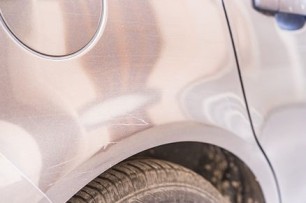
Let's talk about car fenders and how they are distinct from regular bumpers
As a car owner or enthusiast, it's prudent to educate yourself about vehicle parts. The most confusing of them are fenders and bumpers that keep your car safe. You may have heard the term "fender-bender" from drivers when they get into a car accident and wondered, "What does it mean?" Fender and bumper damages refer to physical damages to your cars, such as dents. If you have recently bought a new car, this article will help you understand the difference between these terms.
However, before diving into fender vs. bumper issues in detail, we advise you to buy new car insurance to ensure your vehicle gets adequate protection against accidental damages and a hassle-free repair and servicing.
What is a car fender?
The fender has been a part of automobiles for a long time now. It is the part of the car that covers the wheels. The section where the fender goes is popularly called the "quarter panel." The quarter panel is the rounded corner of the car that protects the wheels.
In older vehicles, the fender used to be more pronounced. Whereas nowadays, with the modernisation of the structural design of cars, fenders have taken a flatter shape, complementing the car's frame.
Car fenders are an essential accessory for your car, as they play a crucial role in keeping the vehicle and its occupants safe. As the car moves, the tires grab and throw anything that comes in its path, such as small rocks, mud, water, etc. Fenders provide resistance against wind and roadside debris while protecting surrounding areas and nearby people from projectiles from your tyres.
What is a car bumper?
A car bumper has a "bumping" function, which means it acts as a protective perimeter to the body of your car and prevents other objects or vehicles from impacting it. In simple words, it reduces the impact of a collision by absorbing minor shocks. You can find bumpers in two places in your car, one in the front and another in the back.
Car bumpers may not prove very beneficial in protecting your vehicle from high-speed crashes, but they are quite valuable for safety during minor accidents. They also serve to protect pedestrians from severe injury in case of a collision.
Just like fenders, bumpers have also reduced in their size. Previously, they were mainly used for decorative purposes, and people came up with new stylistic designs. However, they have gained quite much attention in the automobile industry in recent years. They are no longer considered decorative items but essential for safety purposes. The effectiveness of rear and front bumpers has saved the lives of numerous car accident victims.
Several car owners struggle to understand the parts of their vehicle, making it challenging to communicate with the mechanics about car troubles. However, educating yourself about them can make all the difference when it comes to the proper maintenance of your vehicle.
Similarly, think of investing in the security of your car and buying new car insurance to ease the concerns that can empty your pockets and leave you frustrated. Understand your role as a responsible owner and do whatever is necessary to keep your four-wheeled companion safe.
Click HERE to buy new car insurance with the best benefits.
Disclaimer: The information provided above is for illustrative purposes only. To get more details, please refer to policy wordings and prospectus before purchasing a policy.
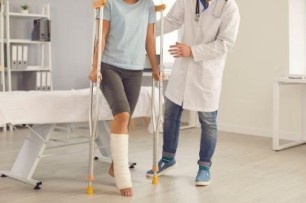
Useful tips to make healing and recovery of fractures fast and less painful
Of the many injuries we are familiar with, a fracture seems to be the most painful. Not only it is excruciatingly painful, but it also takes a long time to heal. A fracture can slow you down, even for basic day-to-day chores. The healing is given ample time to ensure that the bones are correctly aligned. But having said that, waiting for your fracture to heal can be tedious.
The healing of a fracture covers three main stages: Inflammatory, reparative, and remodelling. During the inflammatory stage, special cells assemble in the injured area and cause redness and swelling. This is an indication to the body to stop using the affected area. The first bridge between the broken bones is made here as a blood clot or hematoma.
During the reparative stage, a soft bone or callus takes the position of the blood clot and holds the broken bones together. This soft callus is not strong enough to handle weight and movement. Over the subsequent weeks, the callus becomes stronger and can handle movement.
During the final stage, the normal bone replaces the callus entirely, and over a few weeks, the bone is back to its original condition.
In this article, we will look at the few things we can do to accelerate the speed of recovery.
1. Restricting movement:
The more the movement, the longer it takes for the bones to heal. To heal properly and quickly, the best method is immobilisation. Castes and plasters are the most common ways of giving your bone the support it requires while also restricting any painful movement.
If the fracture is more severe, the doctors might rely on screws, plates, or wires to keep the bone fragments intact. Always remember to consult a doctor in case of pain or discomfort.
2. Improving food habits:
A weak bone can take longer to heal. Vitamins and minerals are vital components of a healthy body. The essential component for bone development is calcium. Include food items such as milk, cheese, and other dairy products that contain high amounts of calcium that your bones require. For your bones to absorb maximum calcium from these food items, your body also needs Vitamin D. Vitamin D helps the bones effectively absorb the calcium from various food sources.
Avoid smoking and alcohol consumption. People who indulge in these habits experience slower and more painful healing. Avoid food with high sugar and salt content. Excessive sodium or sugar removes calcium from your body and significantly slows down the repair of broken bones.
3. Physical therapy:
Physiotherapy can work wonders for bone repair. Blood flow is an essential part of bone healing. Therapy under the guidance of a physiotherapist can help you regain strength and a greater range of motion. There are also some exercises that you can occasionally do. This ensures that your muscles and bones do not get stiff over time while in a cast.
4. Post care:
After the cast is taken off, try not to test the broken bone. Do not put a lot of pressure on the bone to ensure if your bone has healed or not. As tempting as it may seem, give your bones time to adapt to the surroundings without having external support.
These are a few valuable tips you can follow if you want a faster recovery of broken bones. All the methods mentioned above are simple practices you can incorporate into your daily routine. Healthy eating habits, regular exercising, and timely body check-up are essential to maintaining an overall healthy lifestyle.
This article is also a reminder for you to do your health insurance policy renewal. Accidents can be expensive, with the medical bills skyrocketing. Hence timely health insurance policy renewal is non-negotiable to avoid stress due to health problems.
Click HERE for health insurance policy renewal.
Disclaimer: The information provided above is for illustrative purposes only. To get more details, please refer to policy wordings and prospectus before purchasing a policy.
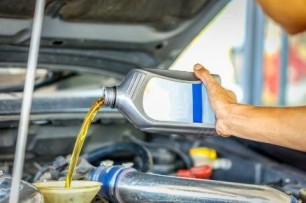
Important tips for selecting the best engine oil for your car
Regular car maintenance is a worthwhile investment since it allows a vehicle to operate more effectively and safely. Moreover, it helps avoid the need for expensive repairs in the future. Changing the engine oil improves the performance of your engine by spreading heat and keeping an appropriate temperature in the combustion chamber. In addition, you must remember that a well-maintained car helps you secure a car insurance renewal easily with added advantages like no claim bonus.
It is critical to use the proper lubricant for your vehicle to achieve optimal engine performance. There are many types of car engine oils available, and determining which one is best for your car is not an easy task.
How do you know which engine oil is best for your car? Here are the things you must consider.
1. Oil Viscosity:
When it comes to engine lubricant or engine oil, viscosity is a measurement of the thickness of the oil and the resistance to flowing. It is necessary to match the oil viscosity to the ambient temperature since thick oil does not agitate around the engine. Optimal viscous lubricant promotes energy efficiency while also preventing friction between components. Look at the care guide for your car's oil needs.
2. Analyse the previous engine oil's performance:
One of the essential things you should do when changing your engine's oil is to assess how well the prior engine oil performed. Changing your engine oil at specified intervals is vital to ensure smooth performance and safety.
Suppose the previous engine oil was refined, and there was no need for engine maintenance. In that case, you can use the same oil and brand without hesitation. It's best to choose an oil with the same manufacturer certifications as the one specified in your car manual if you can't find the one you need.
3. Type of car you have:
The type of vehicle is the most crucial consideration when selecting engine oil. There are several important factors to consider when buying engine oil for your car, including whether it is old or new, if it runs on gasoline or diesel, and if it has a high-performance engine or not, the brand, the series, and so on.
4. Follow the advice of the manufacturer:
It is suggested to follow the manufacturer's guidelines for engine oil changes in your vehicle. The importance of these guidelines becomes much more apparent when you own a new car that is still covered by the manufacturer's warranty. Use only the engine oil recommended by the manufacturer during this period because using a different oil could invalidate the warranty and affect your car insurance renewal.
5. Environmental factors:
The choice of engine oil is influenced by whether or not the vehicle is subjected to high-temperature conditions. Choosing an engine oil that can handle low and high temperatures is essential when driving in harsh climates.
It is critical to choose the appropriate engine oil for your engine to run at peak performance. Furthermore, the proper engine oil will improve the engine's performance and the car's overall fuel efficiency.
It is highly suggested that car insurance renewal be done before the due date to receive uninterrupted insurance benefits for a prolonged time. So consider these five factors the next time you're shopping for engine oil to get the best results.
Click HERE to get your car insurance renewal done before expiry.
Disclaimer: The information provided above is for illustrative purposes only. To get more details, please refer to policy wordings and prospectus before purchasing a policy.
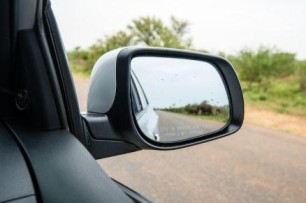
How to ensure maximum visibility by adjusting your car mirrors efficiently
Driving is a predominantly visual activity. Only learning the controls of the car is not enough. Good visualisation is one of the essential skills to develop when driving a car. Although you must concentrate on the road ahead, it is crucial to have a clear view of the sides and back of the car as well. Adjusting the side and rearview mirrors is vital to ensure a well-rounded view while driving.
Further, you should rely on emergency financial help by investing in dependable motor insurance India plans in case of road accidents, as it is always better to be safe than sorry.
All cars have blind spots; therefore, adjusting your rearview and side mirrors to the optimum can ensure maximum visibility and safety on the road. In this article, we tell you how to use your car mirrors efficiently and avoid the chances of accidents while driving.
1. Rearview mirror:
The rearview mirror, positioned next to the driver’s seat slightly above their eye level, is used to see the road behind and if any cars are approaching. The driver must adjust the rearview as per their height and comfort as soon as they get into the driver’s seat.
To adjust the angle of the mirror, sit up straight in a comfortable position, hold your head still, look into the rearview and shift it until the back or rear window is entirely visible in the mirror. Do this to avoid any blind spots. If more than one person is driving the same car, make sure to check the rearview mirror every time you get into the driving seat and readjust it to the best angle, in case it has been shifted as per another driver’s comfort.
When driving at night, flip the tab at the bottom of the rearview mirror that helps dim the light reflected by the headlights of the cars approaching behind you that may strain or blind you. In addition, some advanced car models enter and exit night mode to aid your visualisation.
2. Side mirrors:
Every car has a single side mirror on the left and right sides of the vehicle, respectively. As they are located outside of the car, it can be difficult to manoeuver them from inside. While many modern car models have levers or buttons that help adjust the side mirrors from the inside, some of them may not.
If your car does not have a lever or buttons to adjust the side mirrors, make sure to do so manually, right after you adjust the rearview mirror. Sit upright in the driver’s seat, first glance to one side, and adjust that mirror to an angle that helps reflect the side of the road. Shift it to a wide angle to get a comprehensive view of the side of the road. Repeat the same method for the mirror on the other side. If you have a lever or button inside the car, angle the side mirrors using it. The side mirror should provide a wide sideways view in just a simple glance.
The pro tip is to adjust the side mirrors to an angle that allows you to see right from the side of the road to the very back, including the approaching car, to maintain a safe distance.
Following these few tips to adjust the car mirrors can vastly improve your visualisation and assist you considerably while driving. It leaves very little room for errors or accidents. Apart from angling the mirrors, you must also check the wheel alignment, tyre pressure, oil levels, acceleration, and brake control to ensure safety before hitting the road.
Also, prioritise investing in motor insurance India plans and get the perks of financial coverage in case of loss or damages during accidents. Add value to your possession and get the best returns with assured safety.
Click HERE to know more about motor insurance India plans.
Disclaimer: The information provided above is for illustrative purposes only. To get more details, please refer to policy wordings and prospectus before purchasing a policy.

How mice threaten your bike and how you can prevent it
Indoor rodent infestations may have significantly reduced over the years; however, they still pose a threat outdoors. While we hear several stories about the damage caused by rodents and insect infestations in cars, we rarely hear about how badly they can damage two-wheelers.
Rodents, particularly mice and rats, are primarily attracted to areas where they can find ample warmth and hide. For them, bikes that have been stored away in garages for the long term make a perfect home. Although these mice usually take shelter in cars, bikes are a perfect warm spot for them, specifically in the winter months.
What are the threats caused to your bike by mice?
If you think rust is the worst thing that can harm your bike, you may be wrong. Mice and other such rodents can be far more damaging to your two-wheeler. From chewing on bike parts and wiring to building nests inside your engine, mice can cause terrible damage.
Mice are quick to chew into various parts of the bike, especially wiring. This can cause the engine and other parts to fail and is very difficult to fix. These damages incur high costs for the maintenance of your bike. In addition, it can be challenging to reach and repair the internal parts of the bike that have been damaged, causing unfavourable wear and tear in the process.
The nests created in internal parts of the bike are another major issue. Mice store food and other materials in the nests, which can clog the engine. They carry diseases and germs that can be detrimental to your health. If the nest is built near the air filter, there is a considerable danger of expelling rodent excrement every time you start the bike, leading to the spread of airborne viruses.
How to keep mice away?
Whether you are trying to get rid of the mice or are simply taking preventive measures to protect your vehicle, these few tips will go a long way in avoiding any more damage caused by rodents:
1. Mice try to find places that humans or other animals don’t regularly use. A stored bike in the garage or outdoors is one such place. The easiest thing to prevent this is to take the bike out for a ride frequently.
2. A simple mouse trap can help catch the ones that may be inside your vehicle. Keep the bike in a shed or enclosed area, set enough mouse traps around and underneath the bike, and check after a couple of days.
3. You can find many mice or rodent repellent sprays and medicines in local stores or online. Spraying these all over the bike will help chase away all the mice dwelling in and around the two-wheeler and prevent any more rodents from coming near it.
4. Block all mouse holes or hiding places in the garage where you store your bike. Making it a rodent-free zone is crucial. Avoid parking the bike in forested areas or lands with tall grass to avoid any future infestation.
5. Mice have a strong sense of smell and can be highly affected by it. Applying peppermint oil on tiny buds of cotton and placing them in various corners of the vehicle can help drive them away.
These tips may not undo all the damage caused to your vehicle, but it’s always good to be aware. So, be wise enough to have bike insurance so that you can recover the damage caused by mice. Also, if your bike insurance plan covers non-collision damages, you can easily file a claim.
Click HERE to get the best deals on bike insurance.
Disclaimer: The information provided above is for illustrative purposes only. To get more details, please refer to policy wordings and prospectus before purchasing a policy.

Plan to enrol your kids in these exciting activities and make the monsoon season enjoyable
The onset of monsoon is a gift for humans, animals, and plants. The lush greenery, the sweet smell of moist soil and the cold winds are a much-needed respite from the scorching summer months. But with all the monsoon goodness comes a set of challenges as well.
Children end up locked inside their houses, hoping for the pouring rain to go away. If you are a parent and you notice your kids growing increasingly impatient, this article is just for you. This article will look at all the activities you can enrol your kids in for a productive and fun monsoon season.
1. Take up a painting class:
Painting is an expressive art form. It is visually stimulating and allows your child to explore different colours and expression mediums. It gives your kids the opportunities to develop creatively and imaginatively.
This gives them the freedom to visualise and metaphorically paint the picture they want. You can help your children navigate the different types of famous artworks for inspiration. Later you can encourage them to join a painting class or workshops and learn to paint their imagination with passion.
2. Sports are always a yes:
In these distressing times of fast-paced technological advancement, we all have fallen sick and are easily prone to multiple health issues. Our bodies have become glued to the smart phones, and all you want is readily available with just one touch and tap of your phone. Rain can put a damper on your kid's physical activities.
Since being outdoors is a complete no-no, kids end up glued to screens. Indoor sport is your solution. Games such as table tennis, carrom, and chess are a few sports kids can play in the comfort of being indoors. Do not let rain be the reason your kids stay away from the fun.
3. Never say no to learning music:
Music, like painting, is again an expressive art form. The sounds stimulate your brain, which can then interpret different versions of tunes and rhythms. They help your child distinguish between various moods and emotions, thus enabling them to create their music. Notice how your kids pick up different notes from the song. Understand and encourage them to pursue various music skills and may also enrol in a music class.
4. We have all heard of abacus:
Abacus and mental maths tips and tricks will always be everyone's favourites. It doesn't harm learning quick tricks to help your child academically in the future. This enables the brain to enhance its analytical and logical power. Abacus classes can help your child improve their logical reasoning and make brisk calculations.
Ask your child if these activities interest them, and let them take the lead while staying indoors during the monsoon season. Parents must always focus on planning experiences to help their children be independent and happy. Don't let the rain wash out the excitement of your children. Monsoon can be fun, too, if activities are planned rightly.
Apart from the skills development, you should consider the plans for keeping the kids protected under any unforeseen circumstances which might arise during different walks of life. One of the best gifts your child can get is insurance benefits. As a parent, you must discuss your options and purchase the best general insurance for catering to your children's needs in the best ways possible.
Refrain from taking drastic decisions while buying general insurance. Take your time, do the best research, understand your child's requirements, and accordingly select the plan that is the best!
Click HERE to learn more about how purchasing general insurance.
Disclaimer: The information provided above is for illustrative purposes only. To get more details, please refer to policy wordings and prospectus before purchasing a policy.


